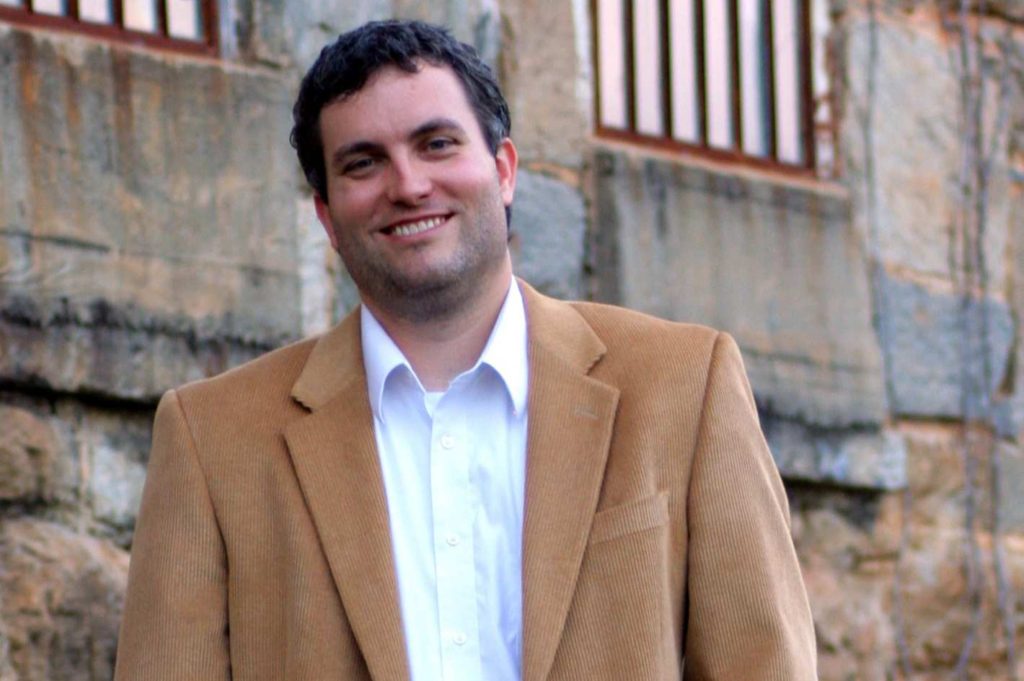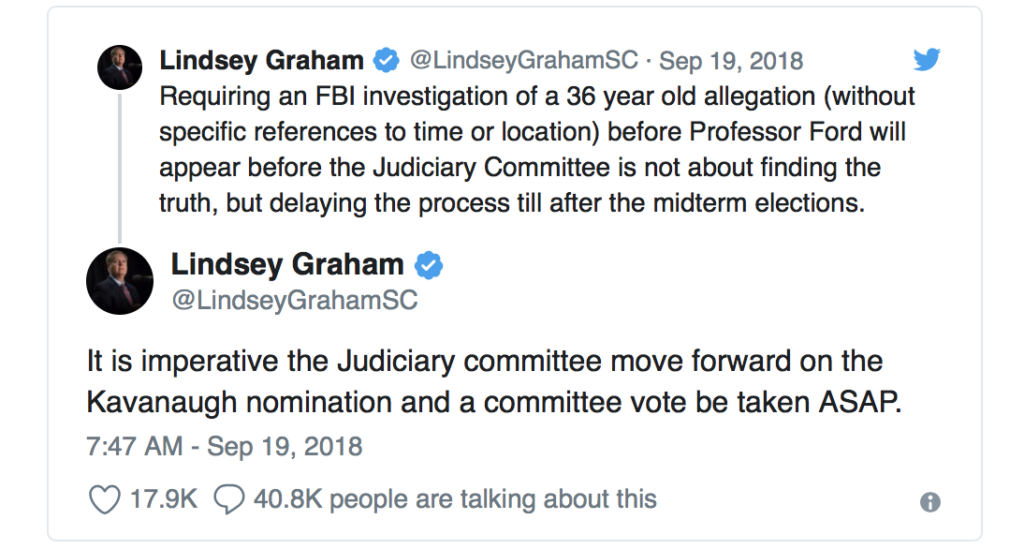
Brett J. Talley
The news, if you care about the courts and the constitution, was pretty awful last week. The lede in this LA Times story was the the Senate Judiciary Committee rubber-stamping a grossly unqualified and incompetent judicial nominee.
How do I know he was grossly unqualified and incompetent? Because he has just three years of actual practice and has never tried a case:
Brett J. Talley, President Trump’s nominee to be a federal judge in Alabama, has never tried a case, was unanimously rated “not qualified” by the American Bar Assn.’s judicial rating committee, has practiced law for only three years and, as a blogger last year, displayed a degree of partisanship unusual for a judicial nominee, denouncing “Hillary Rotten Clinton” and pledging support for the National Rifle Assn.
On Thursday, the Senate Judiciary Committee, on a party-line vote, approved him for a lifetime appointment to the federal bench.
And so while various politicos think and talk in terms of grooming judges for future higher judgeship where they can become activist in shaping policy and interpreting laws and the constitution in a way favorable to their political ideology, those of us in the trenches are forced to practice law in front of them. But this potential judge has never brought a case or even argued a motion:
“He’s practiced law for less than three years and never argued a motion, let alone brought a case. This is the least amount of experience I’ve seen in a judicial nominee,” said Kristine Lucius, executive vice president of the Leadership Conference on Civil and Human Rights.
Once upon a time, a judicial appointment was the capstone of a career spent in the law, with new judges bringing the wisdom of their decades of experience. Now it is turning into a political training ground for clueless baby lawyers.
But it is not enough to rail against Trump for doing this, because Trump only nominates. And nominating/appointing the most competent people to positions has not exactly been the hallmark of his administration.
Talley can only take the bench if the Senate says so. So far, the Judiciary Committee, which should know better than to sabotage the Constitution, simply bent over for Trump and took it. It is inconceivable that any person on that committee believes Talley has the competence for being a judge.
So what can go wrong? The people that will suffer are litigants who are force to come before him if the Senate continues the Judiciary Committee’s rubber stamping.
And if you think this will auger well for those of a conservative bent, under the theory that Talley is merely a political hack who will do their bidding, then I think you’re mistaken. Bad rulings lead to appeals. And delays. This is money and time. Getting a favorable ruling in the trial court only to be reversed on appeal is not a benefit.
There are many lawyers who, if a judge is about to commit reversible error, will stop the judge even if the ruling would favor them at trial. Because a tainted verdict is quite often a very bad problem. (Others, of course, will gleefully grab the bad decision and just worry about the ramifications later.)
The Senators know what they should do. The question is will they have the courage? Will they show respect for our Constitution? Will they allow incompetence to take the bench?
We will find out soon.
Addendum: I wrote this in 2009 about what I want to see in a SCOTUS nominee, but much of it holds true for lower level federal judges as well. I want to see experience: The SCOTUS Nominee and The Tissue Box Test
Elsewhere:
He has never tried a case, but Trump wants to make him judge for life (Phillips @ The Washington Post)
Brett Talley, a 36-year-old lawyer whom President Trump nominated for a lifetime federal judgeship, has practiced law for only three years and has yet to try a case….
…Talley’s lack of experience in the courtroom and his partisan commentaries, however, were repeatedly questioned by Democrats on the Judiciary Committee.
“Your overall qualifications and preparation for becoming a lifetime-appointed federal judge are a concern to me,” Sen. Dianne Feinstein (D-Calif.) said, according to her written questions to Talley.
Sen. Richard J. Durbin (D-Ill.) did not mince words, asking questions like: “How can you claim to be qualified for a lifetime appointment to supervise federal trials on a daily basis when you have never yourself tried a single case?” and “Do you think it is advisable to put people with literally no trial experience on the federal district court bench?”
Donald Trump’s Unqualified Judges (Mataconis @ Outside the Beltway)
Where [Trump] differs from those predecessors is in the percentage of nominees who have been rated “not qualified.” As can be seen [in the attached chart], he is far ahead of any of his four immediate predecessors in this category, with roughly 20% of his nominees to date receiving the rating.
Talley Ban (Greenfield @ Simple Justice)
He worked in the Alabama Attorney General’s office for a couple years, and now for DoJ since January. Talley’s is the resume for a senior associate position at Biglaw, and he would almost certainly get the job. It’s not a bad resume. It’s just not federal judge material…
…So what makes Brett Talley unqualified? It’s the package. He’s a legal kid, a babe in the legal woods. Born in 1981, a year before I graduated law school, he’s been admitted to practice ten years. Had he been in the trenches for all ten of those years, he still wouldn’t be qualified to serve as a federal district court judge. Nobody knows their ass from their elbow in so short a time. Nobody gains the breadth of legal, or human, experience without paying their lawyer dues. Regardless of the pieces that comprise the package, the sum total of the package is what matters. His package is almost empty.






